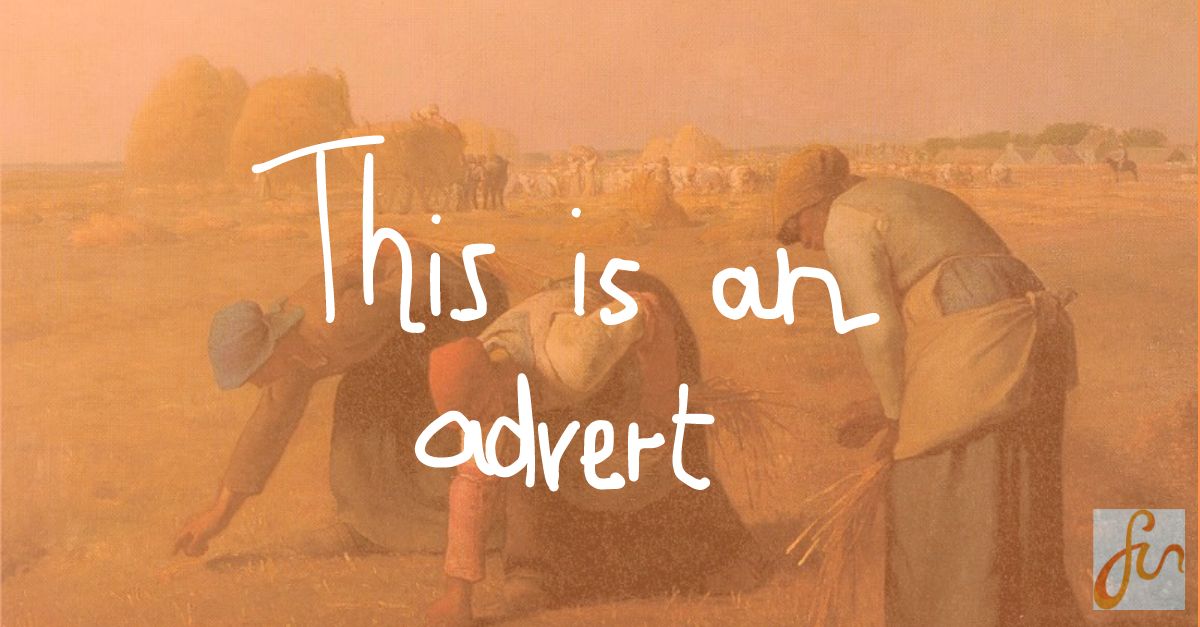Are Ugly Ads Something We Should Be Considering in Financial Services?
In the landscape of online marketing, including the financial services, a rebellion is brewing… the rise of ‘Ugly Ads’, and we can’t decide how we feel about it. Once dominated by meticulously curated and aesthetically perfect advertisements, there has been a shift, where people are now embracing the raw and unpolished.
Yes, you read that right – the era of Microsoft Paint-style ads is back!
What is an ‘Ugly Ad’?
Best described in a video created by The Goat Agency, an ‘Ugly Ad’ is a realistic and basic approach to marketing a product or service. It’s a rebellion against the heavily curated and stylised world that social media and the likes have thrown at us over the years. The idea being, that we’ve become so desensitised to advertising, the only way to recapture our attention is to go back to ‘where it all began’, when adverts were, unrefined, badly edited and quite frankly ugly.
This isn’t a novel trend, however. History has witnessed similar shifts, such as the Realism movement in the 1800s. After the perfection of the Romantic era, artists like Gustave Courbet and Jean-François Millet began depicting everyday life with stark honesty. Paintings like “The Stone Breakers” and “The Gleaners” resonated because they portrayed real, relatable scenes without idealisation.
Today’s ‘Ugly Ads’ mirror this shift, offering content that is raw and unfiltered.
Ugly? Yes. Beautifully Impactful? Maybe.
In 2024, advertising is ubiquitous, and audiences have developed sophisticated filters to tune out the noise. Perfectly edited videos with unique angles and myriad filters now fail to captivate. Instead, people crave authenticity – the mistakes, imperfections, and reality. Bloopers and unpolished moments often garner more engagement than flawless presentations.
The Trend Across Industries
This trend isn’t confined to one sector. Even the finance industry is embracing honesty and behind-the-scenes content. While not perhaps fully following the ‘Ugly Ad’ mould, we’re still seeing glimpses into the raw and unedited sides of companies. On LinkedIn, humour and authenticity are becoming more prevalent, with companies like Monzo leading the charge with their relatable, colloquial content.
This approach is, alas, not quite as easy as it looks. Much like the ‘no makeup/makeup look’, it can often take twice as long to create a piece of content that looks off the cuff. Investment firms also need to be mindful of the tone they strike. Whereas Monzo’s target audience are millennials and lower, the audience of a wealth manager isn’t quite the same.
Is it worth having a discussion with your marketing team or creative agency regarding your approach to this ugly ad trend and see if this is something that should be influencing your brand choices? Remembering that raw simplicity requires more skill to execute than complexity
In an age of information overload, what truly resonates is genuine human connection, particularly in the investment and banking industry. People engage with quirks, inner thoughts, office politics, and humour. ‘Ugly Ads’ tap into this desire for authenticity, making marketing more relatable and effective.
Should Financial Services Consider Ugly Ads?
As the trend of ‘Ugly Ads’ gains momentum, it’s worth reviewing your marketing strategy. Is there scope to injecting more personality and authenticity, as a way of cutting through the noise and connecting with your audience in a meaningful and personalised way. Embrace the transparency and see how your audience responds to a more unfiltered reality of your brand.
In conclusion, it’s something to pay attention to. We are seeing an increase in the desire for authenticity, which should be evident visually, as well as through actions. Financial services succeed through trust and sharing a bit ‘behind the scenes’ might just help that cause.
Like this post? Then you also might like Fin’s post on 3 strategies to building an investment brand of distinction.




